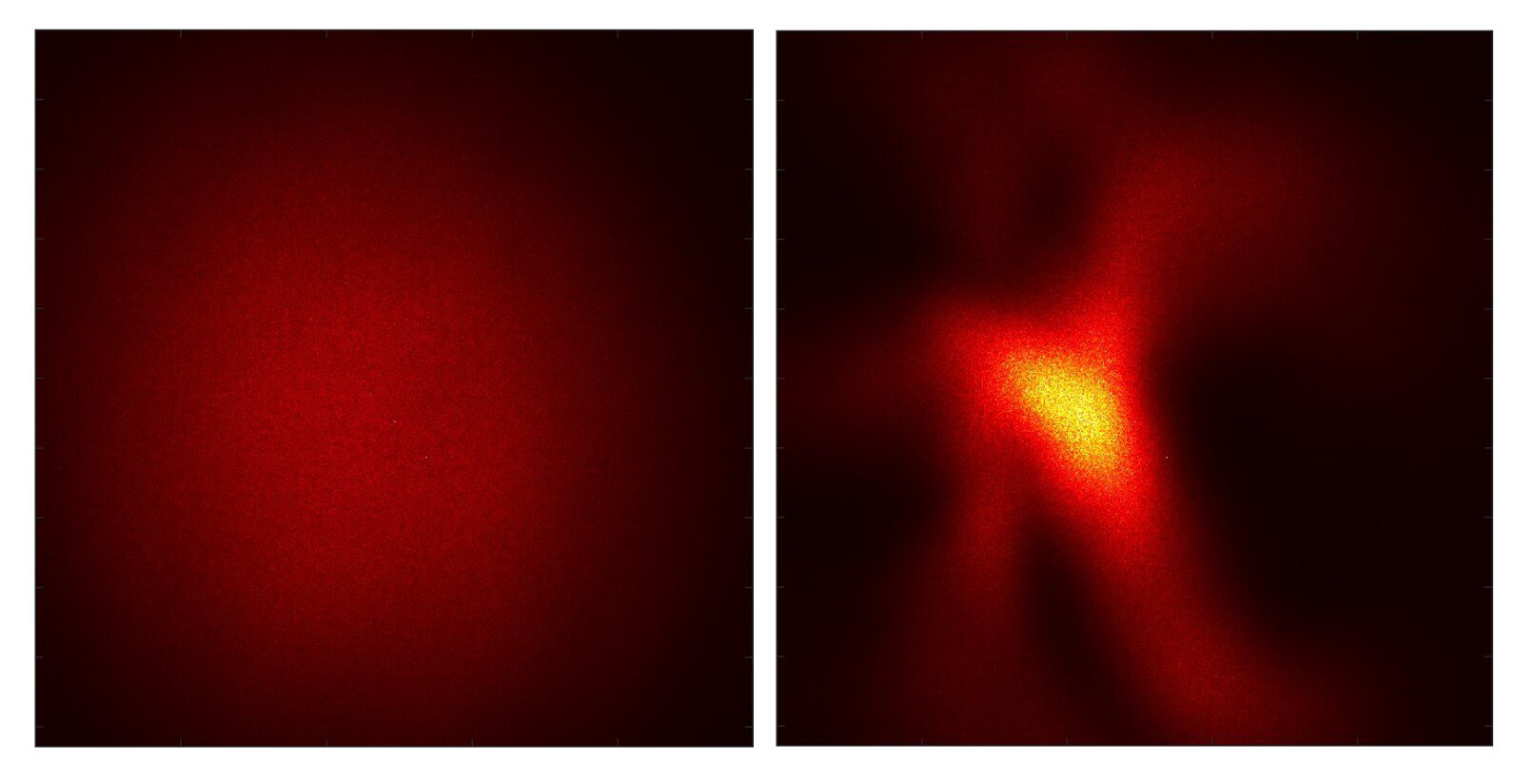Efficient cable communication uses fiber optic cables to transmit data. Light sent through them has a maximum theoretical transmission efficiency of about 92 percent. There are drawbacks to these fibers, but sending laser signals through the air cannot compete with that. However, over the last decade, researchers have started working on ways to do the same across the air – and they just broke a record for distance.
A team at the University of Maryland, where this approach was demonstrated in 2014, was able to transmit a laser for 45 meters (148 feet) and get a good transmission efficiency. To do that, they had to turn the air into a fiber optic, something they call an air waveguide. Without it, a laser (or any light beam) would expand as it travels, so over a certain distance you wouldn’t be able to get a signal anymore.
To carve this waveguide, they used a different high-energy laser to shoot ultra-short pulses. These create plasma along a filament in the air. This hot state of matter heats up the air, leaving behind a path of low-density air in its wake – but that’s not the path followed by the waveguide. The team needs a high-density core surrounded by low-density air. These filaments were created in a ring, with the laser transmission going through the middle.
The team wanted to test how long they could make one of these waveguides. And so they were allowed to test this approach across a long hallway in the university.
“There were major challenges: the huge scale-up to 50 meters forced us to reconsider the fundamental physics of air waveguide generation, plus wanting to send a high-power laser down a 50-meter-long public hallway naturally triggers major safety issues,” Professor Howard Milchberg said in a statement. “Fortunately, we got excellent cooperation from both the physics and from the Maryland environmental safety office.”
On the left the laser received at the end of the halwlay without a waveguide. On the right, the same laser with a waveguide. Image Credit: Intense Laser-Matter Interactions Lab, UMD
The air waveguide allowed for 20 percent of the signal to be transmitted. The laser reaching 45 meters (147.6 feet) is 60 times longer than what had been achieved in the past. Afterward, in a lab setup, 8-meter (26-foot) long waveguides were able to transmit 60 percent of the signal. Data collected suggest that they are nowhere near the theoretical limit for this approach and that higher guiding efficiencies can be achieved in the future.
“If we had a longer hallway, our results show that we could have adjusted the laser for a longer waveguide,” says Andrew Tartaro, a UMD physics graduate student who worked on the project and is an author on the paper. “But we got our guide right for the hallway we have.”
The waveguide lasts for about one-hundredth of a second, a small time interval but enough for a laser to cover thousands of kilometers in that time. The team is not expecting to extend the waveguide that far, but they think they can go significantly further than the length of the hallway.
“Reaching the 50-meter scale for air waveguides literally blazes the path for even longer waveguides and many applications,” Milchberg says. “Based on new lasers we are soon to get, we have the recipe to extend our guides to one kilometer and beyond.”
The paper accepted for publication in the journal Physical Review X.
Source Link: Laser Experiment Breaks Record While Crossing University Hallway
